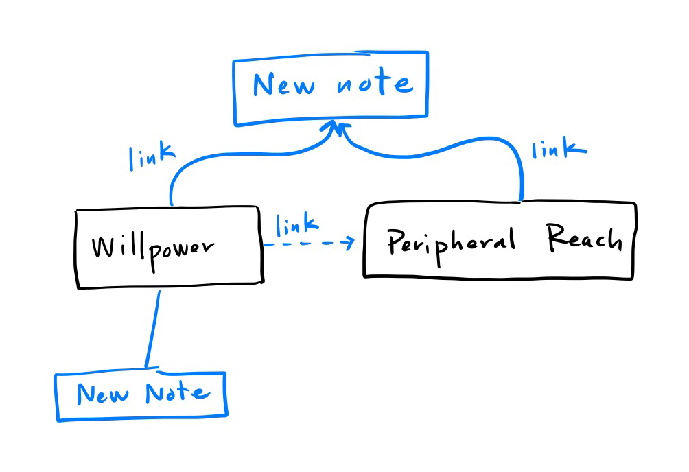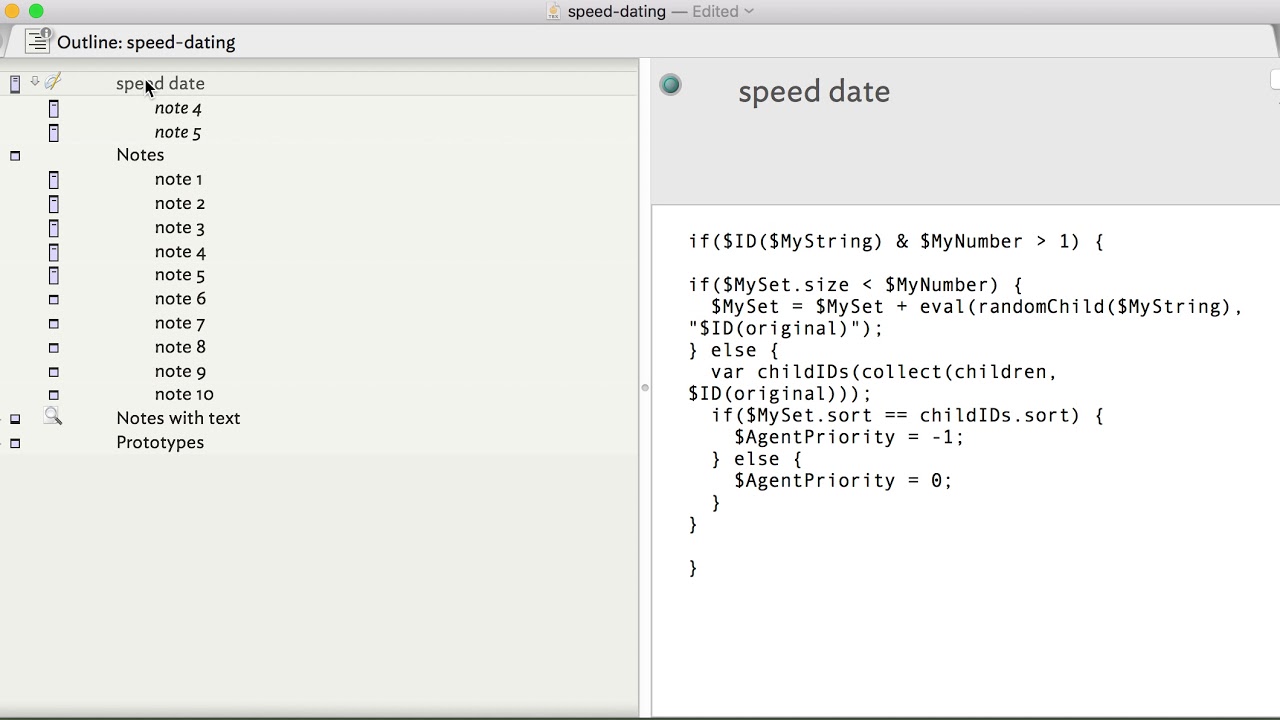The first thing to note is that it’s not entirely random. Yes, the algorithm selects a random note – but the set of notes it chooses from is not random. Using Tinderbox agents, you can define the set of notes to explore. This could be notes from a book you’ve read, a specific topic, whatever. Presumably Beck’s set of notes are things that interest her and have potential to be connected in some way.
If you shuffle a deck of cards and pick one, you don’t somehow end up with a receipt from the grocery store.
To me, Tinderbox excels at supporting the thinking involved in connecting ideas. It doesn’t make the connections automatically – something that other software purports to do.
Here’s an example: if I create two notes, “dog” and “wolf” and place them in a new DEVONthink database, DEVONthink will never identify them as connected. As I add more notes to it, it might eventually find the connection. It might be a direct connection like adding a note “dog wolf”, or less direct by adding two notes “dog canine” and “wolf canine”.
Tinderbox also will not make that initial connection between “dog” and “wolf”. And as far as I know, it won’t be able to bridge “dog” → “dog canine” → “wolf canine” → “wolf” (it does have a similar notes feature, which is not as sophisticated as DEVONthink’s similarity search).
So, why use Tinderbox? Well, my experience is that the act of identifying relationships and making connections is as or more valuable than the connections themselves. In other words, DEVONthink can tell you that something is connected, but it can’t tell you how or why it’s connected.
Say I add another note: “I can really wolf down a hot dog.” Any time I explore my notes for stuff about dogs, DEVONthink will show it to me. And I might like that – one time. I can link it to notes about American idioms and cuisine. But once I’ve made that connection, and I’m looking for stuff about dogs, I really don’t care to see that note anymore.
I can’t speak for Beck, but to me, the “things between the things” are very interesting. Given two different ideas, what is their relationship? Are they directly related? Are they distantly related, and if so, what is the chain of ideas that connect them? Do the ideas agree with one another, or contradict? The human brain can ask these questions and explore their implications. I don’t think computers can.
With Tinderbox, I can gradually add indicators to my notes to indicate meaning and relationships. This might be adding them to a container, or adding tags, or making one note bigger than another, or positioning them closer or farther apart, giving them colors and flags. These are completely arbitrary indicators of meaning that make sense to me, and perhaps to nobody else. They aid me in my thinking.
I think there’s value in using software like DEVONthink to find connections that I wouldn’t ordinarily see. But more important than that, I need to understand the meaning of the connections, which is something that software can’t do. And as I think through the meaning of those connections, I want to codify it in some way. Tinderbox provides an open toolkit for doing just that.






